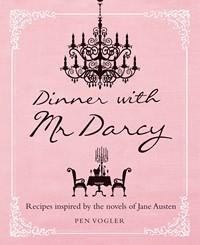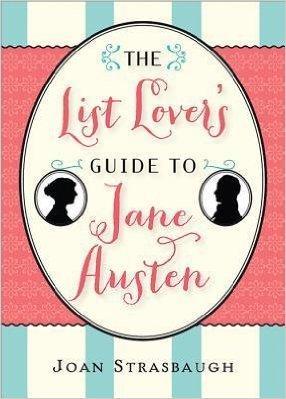 Jane Austen and the State of the nation by Sheryl Craig
Jane Austen and the State of the nation by Sheryl Craig
Jane Austen is universally acknowledged as an excellent writer with a fine grasp of the human condition. Her ever increasing number of fans, her inclusion in nearly every list of worthy writers and English Literature syllabi, her marketability and timeless appeal have created what might be called an international mania. Many would attribute her success to her wit and way with words, others to the age old stories of love and romance that she tells. It seems, however, as if there was more, much more, just beneath the surface: undertones and even overt messages that Jane Austen’s readers would have seen, but which are, for the most part, lost to today’s readers. After all, as Jane herself (in the guise of omniscient narrator) explains in
Northanger Abbey:
“Oh! It is only a novel!...It is only Cecilia, or Camilla, or Belinda”; or, in short, only some work in which the greatest powers of the mind are displayed, in which the most thorough knowledge of human nature, the happiest delineation of its varieties, the liveliest effusions of wit and humour, are conveyed to the world in the best–chosen language.”
I have, over the past few months, had the great privilege of first hearing and then reading the works of celebrated Austen scholar and international speaker,
Dr. Sheryl Craig. The talk she addressed to our JASNA gathering in November, entitled “So Ended a Marriage”, looked at
Mansfield Park in light of the divorce and custody laws current during Jane Austen’s day. Drawing from actual divorce transcripts, she carefully laid out a plausible defense for Austen’s use of the novel as political statement about the rights of women and their treatment as property. An abridged version of this talk can be found on
Sarah Emsley’s Mansfield Park site, and the entirety has been printed in JASNA’s
Persuasions #36.
Immediately following the talk, I eagerly began reading Dr. Craig’s newly published book,
Jane Austen and the State of the Nation. I don’t know what I was anticipating, but what I found was truly fascinating. Dr. Craig has an easy, informed style, which makes even a subject like Georgian and Regency economics at once fascinating and accessible to the lay reader. Again, she brings her impressive knowledge of Austen’s life and times to bear with great effect. The book delves into Georgian social welfare and political response, and is rife with colorful anecdotes and period illustrations. It seems that even the counties chosen for Austen’s heroines to reside in held meaning for her period readers.
Now, of course, might be a good time to point out just how qualified Dr. Craig is. Her biography reads like a Janeite’s bucket list:
Sheryl Craig is an Austen scholar with a Ph.D. in nineteenth-century British literature from the University of Kansas. She’s a life member of the Jane Austen Society of North America and editor of 'JASNA News'. Sheryl has published articles in 'Persuasions', 'Persuasions On-Line', 'The Explicator' and 'Jane Austen’s Regency World', and on the websites of the Jane Austen Centre and Chawton House Library. In 2008, Sheryl was selected to be JASNA’s International Visitor, and in 2011-2012, she was JASNA’s Traveling Lecturer for the Central Region. She has presented at regional and national JASNA conferences and to Canadian and Scottish branches of the Jane Austen Society.
In
Northanger Abbey, Jane Austen wrote ironically,
“A woman, especially,
if she have the misfortune of knowing anything, should conceal it as well as
she can.” These words, from Henry Tilney, were meant to be taken in jest, but there may have been an element of truth to them as well. Jane, as we know, was quite clever—too clever, perhaps for her small social circle. As an avid reader of books and newspapers, a patron of the circulating library and an eager student of history and past masters, she peppered her personal correspondence with quotes both old and new, and innumerable references to current events.
Dr. Craig posits that one can not only trace the Georgian political and social climate through the chronological reading of Jane’s novels, but even more so Jane’s answer to the ever growing crisis around her. It’s easy to think that because war and poverty are hardly glimpsed in Jane Austen’s novels, that she is ignoring those unpleasant realities of life, focusing instead on the “
three or four families in a country village” we are used to reading about. In reading J
ane Austen and the State of the Nation, one begins to think that Austen’s novels are not at all what they seem upon first reading. Masking themselves as chick-lit romances, they find their way into the hands of men and women everywhere (including the Prince Regent and Sir Walter Scott) only to promote a rational, even-handed political agenda in the face of government corruption, national recession and widespread unemployment (not unlike that which is facing too many nations today.)
I feel quite foolish—as if I could not see what was right before my eyes, as though I had been duped by the pretty people, beautiful language and enduring story lines. There is so much more to Austen upon rereading through the lens provided by Dr. Craig. It’s as if, after intimately knowing the novels for more than twenty years, I’ve been given the opportunity to read them again for the first time. What I find are cleverly crafted lessons in statesmanship and stewardship which might as easily be applied to today’s foundering economy, working at such a basic level that anyone (landed gentry or not, Georgian or Generation Y) might be able to apply them to their own life.
England’s economy was falling apart at the seams, but rather than show the depravity and baseness of the human condition, rather than beat the reader over the head with everyday senseless tragedy, as Thomas Hardy and Charles Dickens were wont to do, Austen’s fine hand gently paved the way for her understanding readers, and in such a way, through endless analogy, that her modern fan base can hardly see the “forest for the trees”, as it were.
As a historically interested Jane Austen fan, I thoroughly enjoyed this book and will be rereading chapters and taking my time perusing the generous bibliography before lending it out with my highest recommendations. That being said, I am feeling somewhat ignorant at the end of the day. After hearing Dr. Craig speak, I felt I had not really ever understood (my least favorite of the novels)
Mansfield Park, as it was clearly a treatise on the rights of women. Now, however, I find that
Mansfield Park is actually a political expose on the state of the British colonies and Parliament’s answer to it. This too, with the given facts, seems perfectly logical and reasonable. Clever, clever Jane. What else have I been missing? No doubt there are dozens of other subtexts to be found if only one will look just below the surface.
Jane Austen once compared her style of writing to that of her nephew, Edward Austen’s: “
What should I do with your strong, manly, spirited sketches, full of variety and glow? How could I possibly join them on to the little bit (two inches wide) of ivory on which I work with so fine a brush, as produces little effect after much labour?” (December 16, 1816) Those who have read Charlotte Brontë’s
Jane Eyre are given a vivid picture of the difference of a charcoal sketch vs. an ivory portrait such as Austen describes,
“An hour or two sufficed to sketch my own portrait in crayons; and in less than a fortnight I had completed an ivory miniature of an imaginary Blanche Ingram. It looked a lovely face enough, and when compared with the real head in chalk, the contrast was as great as self-control could desire.” One is harsh and realistic, the other stylized, beautified and dainty. One of the reasons we love Jane Austen’s novels so much is for the escapist feel they bring, as we enter a world of order, beauty and light. This is the very impression Jane is seeking to create with her “little bit of ivory” analogy, and yet, beneath, there lies layer after layer of depth, complexity and realism that I am only beginning to comprehend. I am so grateful to Dr. Craig for opening my eyes, and anxiously anticipate her next book (fingers crossed that it will be published soon!)
-
List Price: £55.00
-
Hardcover: 208 pages
-
Publisher: Palgrave Macmillan; 1st ed. 2015 edition (August 19, 2015)
-
Language: English
-
ISBN-13: 978-1137544544
Laura Boyle is fascinated by all aspects of Jane Austen's life. She is the proprietor of Austenation: Regency Accessories, creating custom hats, bonnets, reticules and more for customers around the globe. Cooking with Jane Austen and Friends is her first book. Her greatest joy is the time she is able to spend in her home with her family (1 amazing husband, 4 adorable children and a very strange dog.)
 Jane Austen and the State of the nation by Sheryl Craig
Jane Austen and the State of the nation by Sheryl Craig


Leave a comment
This site is protected by hCaptcha and the hCaptcha Privacy Policy and Terms of Service apply.